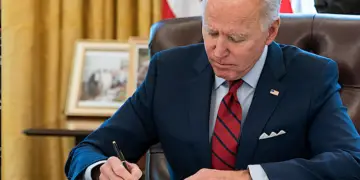State officials shrugged off federal advisement and met improperly behind closed doors on the path to approval of $511 million in loans for the Tappan Zee Bridge replacement, according to an investigation from a state budget office.
The Authorities Budget Office, a state watchdog agency, criticized the approval of the loans in a Nov. 20 report, saying the process lacked public engagement and had only “limited discussion.” The federal Environmental Protection Agency, which had expressed reservations about the project”™s eligibility for the funding, ultimately rejected $482 million of the loans in September, saying it was ineligible. The state formally appealed that decision Nov. 14.
The loans were approved by the state”™s Environmental Facilities Corp., an agency that administers a federal clean water fund that is traditionally used to finance local drinking water and sewage treatment projects. Gov. Andrew Cuomo, a Democrat, had announced the loans to fund part of the $3.9 billion new Tappan Zee Bridge, for which the source of the majority of funding remains murky.
The EFC held two closed-door meetings tagged as “conceptual” or “exploratory” to discuss the loans, in violation of government transparency rules, and held a third meeting prior to approval. There was no public input phase.
“Meeting in executive session resulted in a lack of transparency and disclosure,” the report said. Two of the six board members voted to authorize the loans without having participated in any of the three meetings discussing the loans. The EPA in a June 25 letter expressed concern over whether the loans were an appropriate use, but EFC members did not address the letter and said they were prepared to approve the funding the day after the letter, in a June 26 EFC board meeting.
“Board members expressed little concern over the issues raised in that letter,” the report said. The budget office”™s report came after interviews with representatives from federal and state agencies, and upon reviewing correspondence between the groups. EFC board members told investigators they had not had contact with governor”™s office representatives to “pressure or influence” their vote.
The budget office went to lengths to analyze the process and the actions of board members under state laws but did not rule on whether it thought the loans would have been a misuse of the clean water fund.
The investigation began this summer after environmental groups filed a complaint with the budget office, saying the loans equated to a raiding of the clean water fund. The EFC did not immediately respond to a request for comment from the Business Journal.
Peter Iwanowicz, executive director of Environmental Advocates of New York, said the manner in which the plan advanced was “beyond reprehensible.”
“It is shameful that as communities across the state struggle to find the funding to repair crumbling sewage systems and drinking water supplies, we learn that the Cuomo administration was working in secret for more than a year to divert more than half a billion dollars from clean water funds to pay for a new bridge,” he said.
Despite the majority of funds being rejected by the EPA, Environmental Advocates filed suit along with Riverkeeper and Waterkeeper Alliance in October to block the proposal altogether.
The clean water loans would have included low- and no-interest funding and they were viewed as a low-cost option for the state. Clean water fund loans average 1.7 percent interest, well below the market average of 3.7 percent, according to the EPA website. The Tappan Zee loans would have saved $17 million over three years, according to Cuomo.
Questions continue over the funding of the Tappan Zee replacement, which has received a $1.6 billion loan from the federal Department of Transportation but little else as far as financing commitments. The questions over funding could affect the borrowing strength of the state Thruway Authority, which will operate the new bridge, and some critics say the only way to pay back the cost of construction will be through systemwide toll hikes, a move Cuomo and the Thruway Authority have pledged not to take.
Without systemwide increases, it is likely the toll on the new bridge will be the main revenue source to pay for the construction, with its final price tag up in the air due to the uncertainty over interest rates and funding sources. The cash toll on the current Tappen Zee is $5, but estimates say the new bridge may have to double or triple the toll.
Some Westchester County business advocates praised the clean water funding because it would help keep the toll on the new bridge down. “Let”™s do the math,” said Ross J. Pepe, president of two building industry groups that represent 600 firms combined, after the announcement of the loans. “Higher environmental protection costs means higher tolls on the bridge. Lower loan financing costs means lower tolls on the bridge.”
Pepe is president of the Construction Industry Council of Westchester and Hudson Valley Inc. and the Building Contractors Association of Westchester and Mid-Hudson Inc.
Construction of the replacement bridge, which has yet to be officially named, began in October 2013 alongside the existing 60-year-old Tappan Zee. The new bridge is expected to be open to traffic in 2016.

















Comments 2